Like every other reptile, ball python sheds skin regularly as it grows. If your ball python is not shedding, it may be a sign of ill-health.
You probably spotted this article because you are worried about your ball python not shedding.
No more worries! You are going to learn more about this issue and what you can do about it.
This article has been reviewed by Dr. Gospel. Read more about our knowledge control process here.
Contents
How often do ball pythons shed?
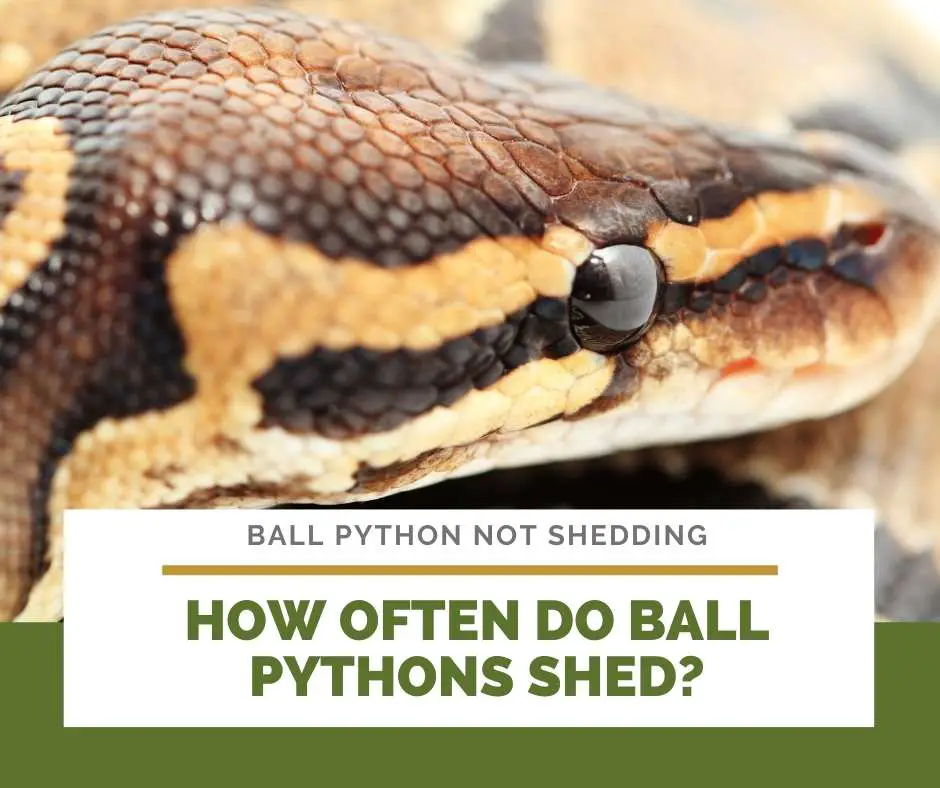
Ball pythons will shed their outer skin to give room for the newer skin underneath. Younger pythons shed more often than older pythons. This is because it is at this young age that growth is at its peak.
Ball pythons shed every 35 – 49 days. Safe to say that shedding depends on eating habit and optimal temperature. If your ball python is not shedding, it may be a sign of ill-health or even poor habitat/husbandry management.
What To Do When Your Ball Python Is Not Shedding?
Knowing what shedding looks like in a ball python is essential to successfully homing and managing one. During this time, your python requires minimum contact and less feeding.
But if the reptile is taking longer than normal to show signs of shedding, you should consult your vet. This could be a sign of ill health that will require treatment.
How long can a ball python go without shedding?
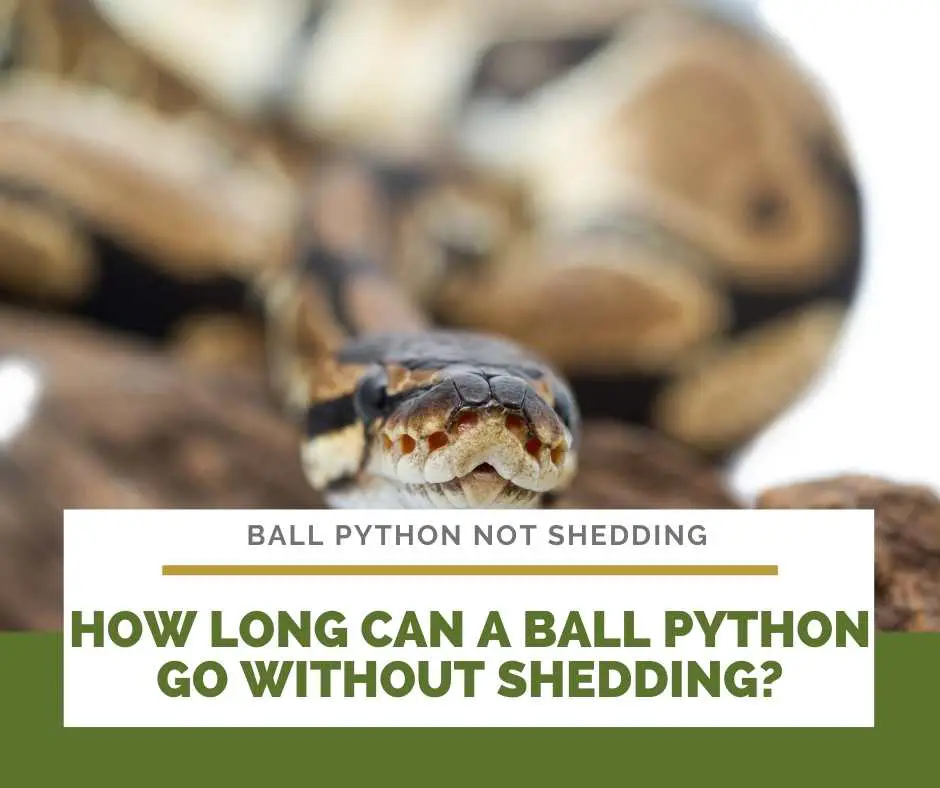
As mentioned earlier, it takes between 35 – 49 days for a ball python to shed. For younger ball pythons, The period between sheds depends on the stage of life of the python, the habitat and feeding habits. Frequent eaters shed their skin more. This is also true for younger pythons, aren’t they the frequent eaters?.
However, there are those scenarios where your pet might show signs of shedding but develop problems that can delay shedding. Below are the signs that your python is shedding.
- The eyes turn cloudy with bluish color
- The belly becomes pinkish
- The old skin will also begin looking dull
- Reduced appetite for food
- During this time, the python will avoid contact with you and become defensive to some extent due to reduced vision.
As mentioned earlier, your ball pythons might not shed after exactly 45-60 days. There are many reasons why your ball python won’t shed their skin.
But if you notice that your ball python has not been shedding for too long (6 months) then there is something wrong with them. You need to take it to a VET for a check-up.
Note: If your pet goes longer without shedding the secretions that aid the outer skin to shed, it will dry and eventually glue the outer and inner skin. The next shedding can occur sooner than usual. If this happens for an extended time, the snake will eventually die.
Can your ball python die from not shedding?
Skin shedding is a snake’s vital stage that occurs regularly throughout his life. Shedding allows for the growth of the skin as well as accommodates the change of its body weight.
Not shedding cannot lead to the death of your snake. But as previously noted, not shedding or incomplete shedding is a sign of poor health in your snake. Not shedding will alarm you of underlying issues. If not handled well, these issues can lead to the death of your ball python.
Retained eye shed is also another issue that may arise as a result of your snake not fully shedding. Ball python contains a spectacle, which is a piece of scale on its eye that should be shed together with the skin. Failure to shed the spectacle will not kill the snake but may lead to blindness
The most common problems that can hinder snake shedding include low humidity, parasite infestation, skin infections, and rodent bites. Sepsis, a condition characterized by blisters on the skin filled with clear fluid can also indicate a poor, cool and damp environment. If you don’t want to lose your ball python, it is wise to immediately seek veterinary care.
Besides, not shedding or poor shedding can also indicate stress or a dehydrated ball python. Ensure you create an appropriate hiding space. To keep their stress level low, they need a cavity where they can cram themselves into.
Ensure that the hiding space accommodates every part of the snake’s body. It is also wise to keep children and pets away from your snake. Above all, reduce the amount of time you use in handling the snake.
Retained eye shed is also another issue that may arise as a result of your snake not fully shedding. Ball pythons have a spectacle, which is a piece of scale on its eye that should be shed together with the skin. Failure to shed the spectacle will not kill the snake but may lead to blindness.
Can you force your ball python to shed more frequency?
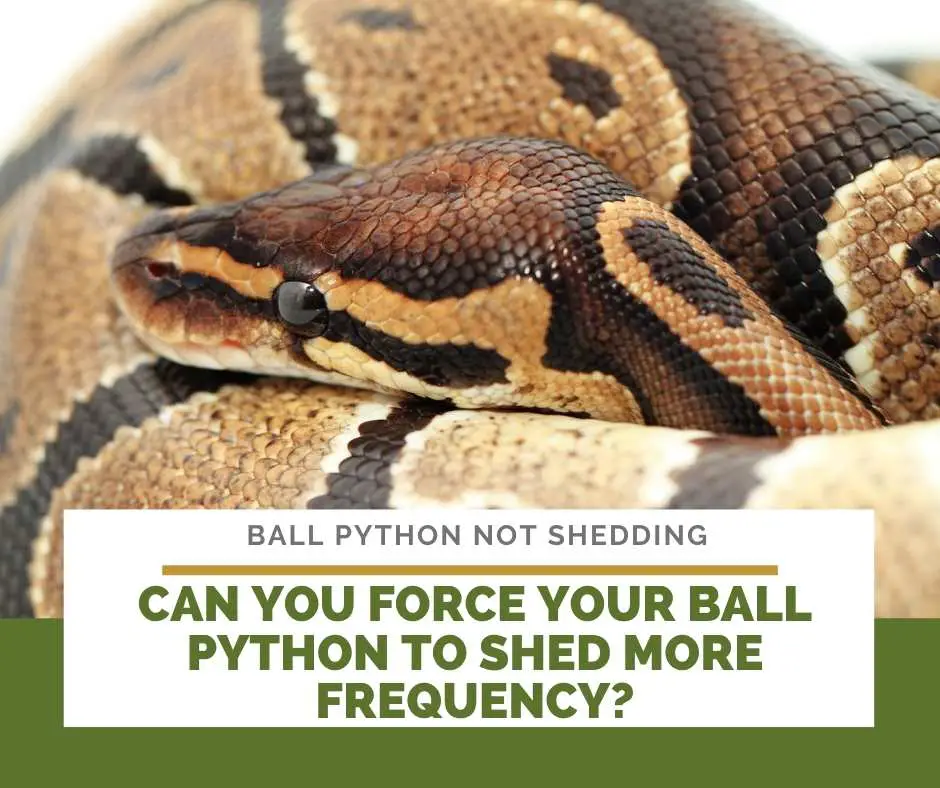
Shedding is a natural process. It will be impossible to force your ball python to shed more frequency manually. Nevertheless, you can influence its shedding more often. Remember the frequency of shedding depends on your snake’s age, environment, and health condition. With this in mind, you can influence the frequency at which your ball python will shed.
Obviously, you can expect the best from your ball python when you give him the best. When the conditions within and around your snake are at their best, you can expect frequent uniform shedding. Some of the conditions you should improve include the following.
- Proper feeding
Do not be surprised when your ball python suddenly refuses to eat. These reptiles are synonymous with picky feeding. Baby python from a breeder may also refuse to eat at first. Give them time to adjust to the new environment. If your python is not feeding on a particular food, try changing the feeding time.
You can switch between live and frozen rodents, rats, and mice, as well as warm your rodent in warm water.
If your pet refuses to feed in more than weeks check for signs of other causes of refusing to eat. Proper feeding will ensure good growth of your ball python hence frequent shedding.
- Maintain good hygiene in your snake’s enclosure
Poor snake habitat may cause various skin problems. Work at it to keep your snake’s environment clean. Ensure you regularly clean the snake’s water bowl, remove any urates, and bits of sheds that could be present.
- Provide a hiding spot
Snakes dislike contact with people and other pets. You can provide more than one hiding place. Make one dry and the other dump to help keep the humidity high. A hiding spot keeps the snake comfortable. This reduces stress levels in your ball pythons.
- Ensure the python is well hydrated
Provide a water bowl for your snake to keep it hydrated. You can also soak your snake occasionally to keep its hydration level high. It is also recommended to keep the humidity of your snake’s environment high during the shedding process.
Introduce a furniture into the enclosure, giving your reptile an opportunity to rub against it as it would do in the wild. Allow your ball python to soak in warm water.
- Keep the python’s stress level low
Stress may lead to a number of health problems in snakes such as poor sheds. It may also lead to various health problems in your pet delaying its shedding. As a reptile enthusiast, it is crucial to not only reduce the stress level but to maintain it at low levels every time.
Snakes will not want a large space for hiding. Keep it relatively small but ensure it can cram up hiding every part of his body. Ensure that you limit contact time with the reptile. Also, keep away every source of stress such as pets and children.
- Keep humidity at proper levels
A humid environment is vital to snakes, especially during the shedding period. You can acquire an affordable hygrometer to measure the humidity of your snake’s environment. High humidity will keep your ball python hydrated. This also encourages proper shedding. If your python is poorly hydrated, problems may arise during shedding.
Vet comment
All snakes shed their skin every once in a while to allow a new one replace it.
Ball python’s aren’t left out here. Your ball python’s shedding process is largely dependent on the feeding habit, environment and overall health conditions.
Although one cannot really force a ball python to shed, you can definitely help ease the shedding process by providing a furniture or your ball python to rub itself against as well as allowing it soak in warm water.
Calling your Veterinarian should be your first line of action if you notice anything abnormal with your ball python.
Wrapping up
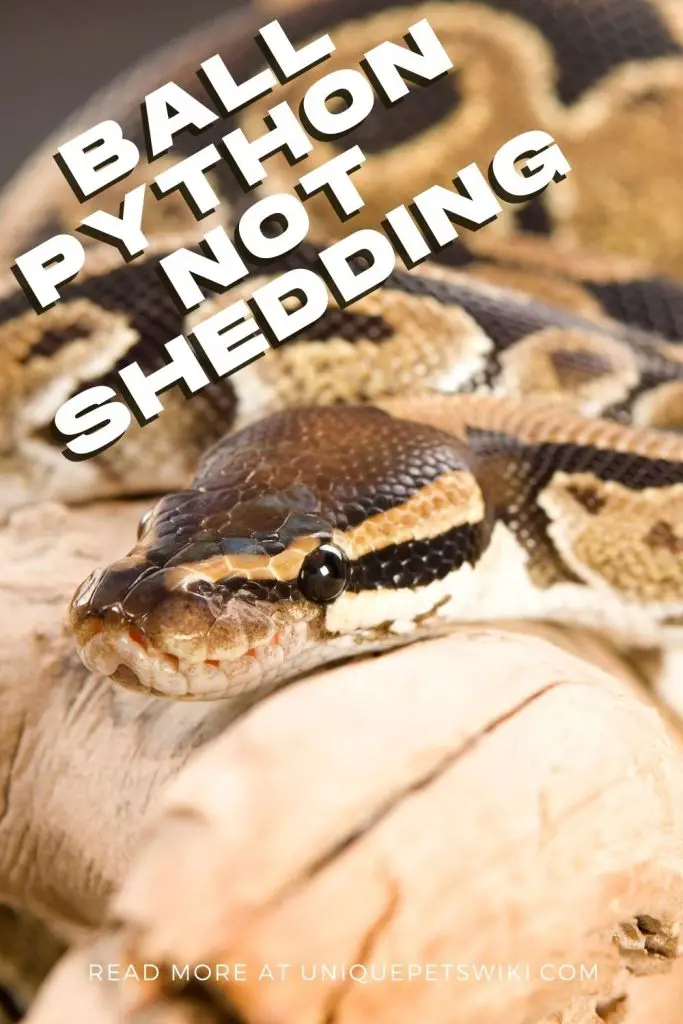
Ball python not shedding-are all your concerns answered? Well, it is a good thing to achieve proper shedding in your ball python. Shedding should occur naturally every 4 to 6 weeks. We have shown you what to do in case your python is not shedding.
Finally, ask your veterinarian if you are not sure about what to do with your ball python concerning shedding.
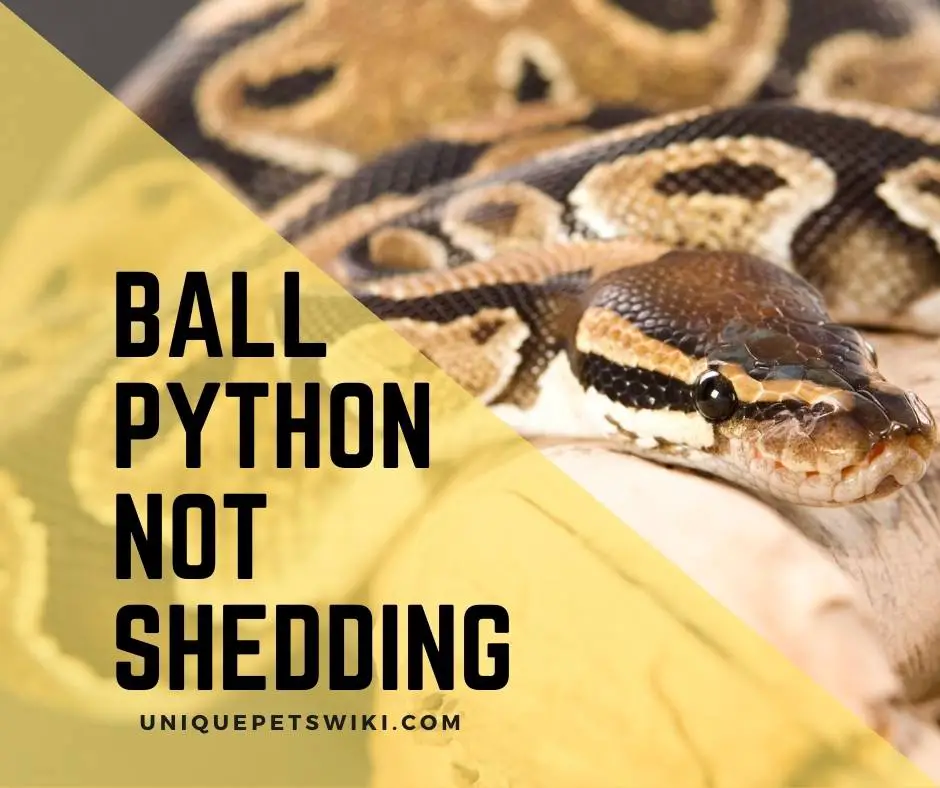
Thank you very much for your information that was very helpful. I love my snake I want him to be healthy your information was very reassuring